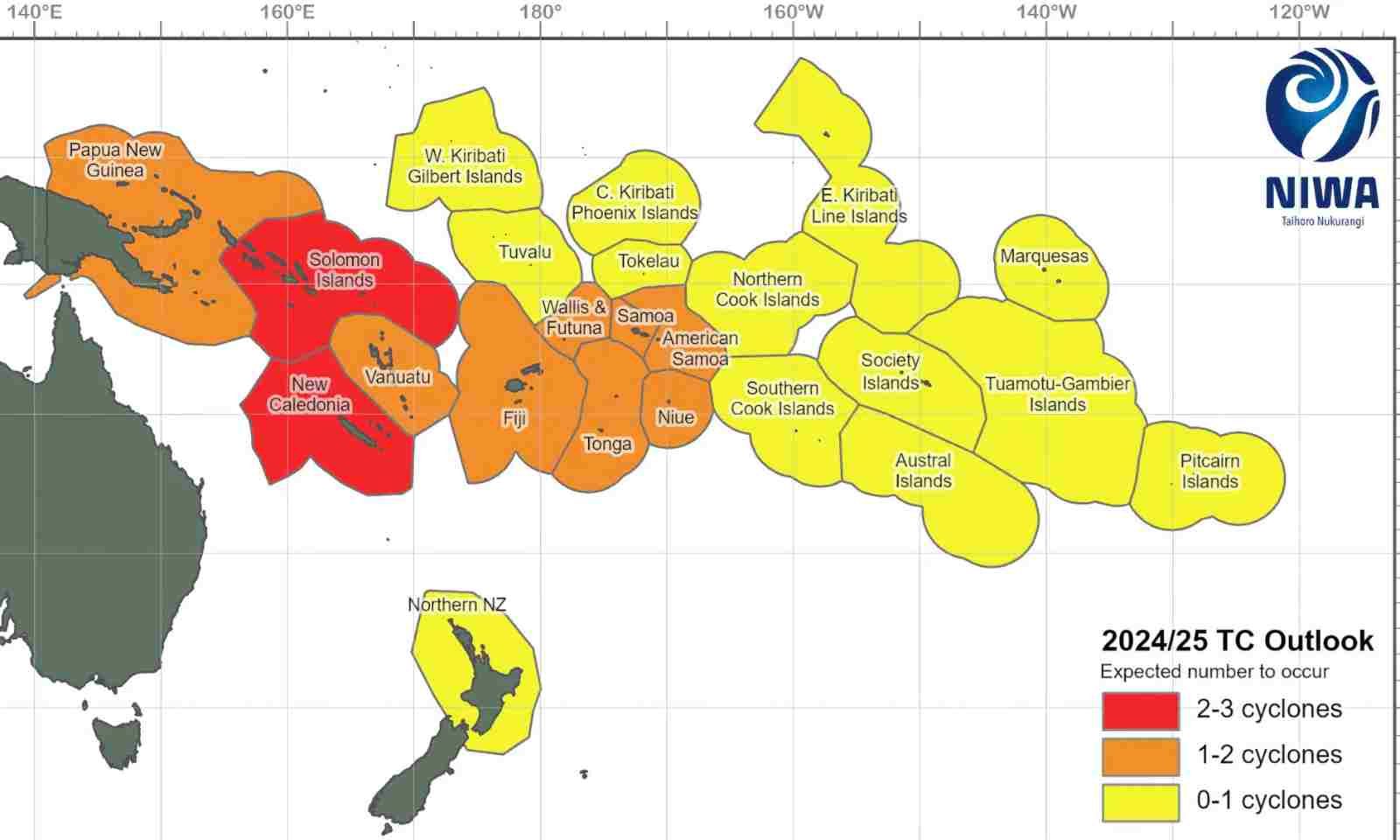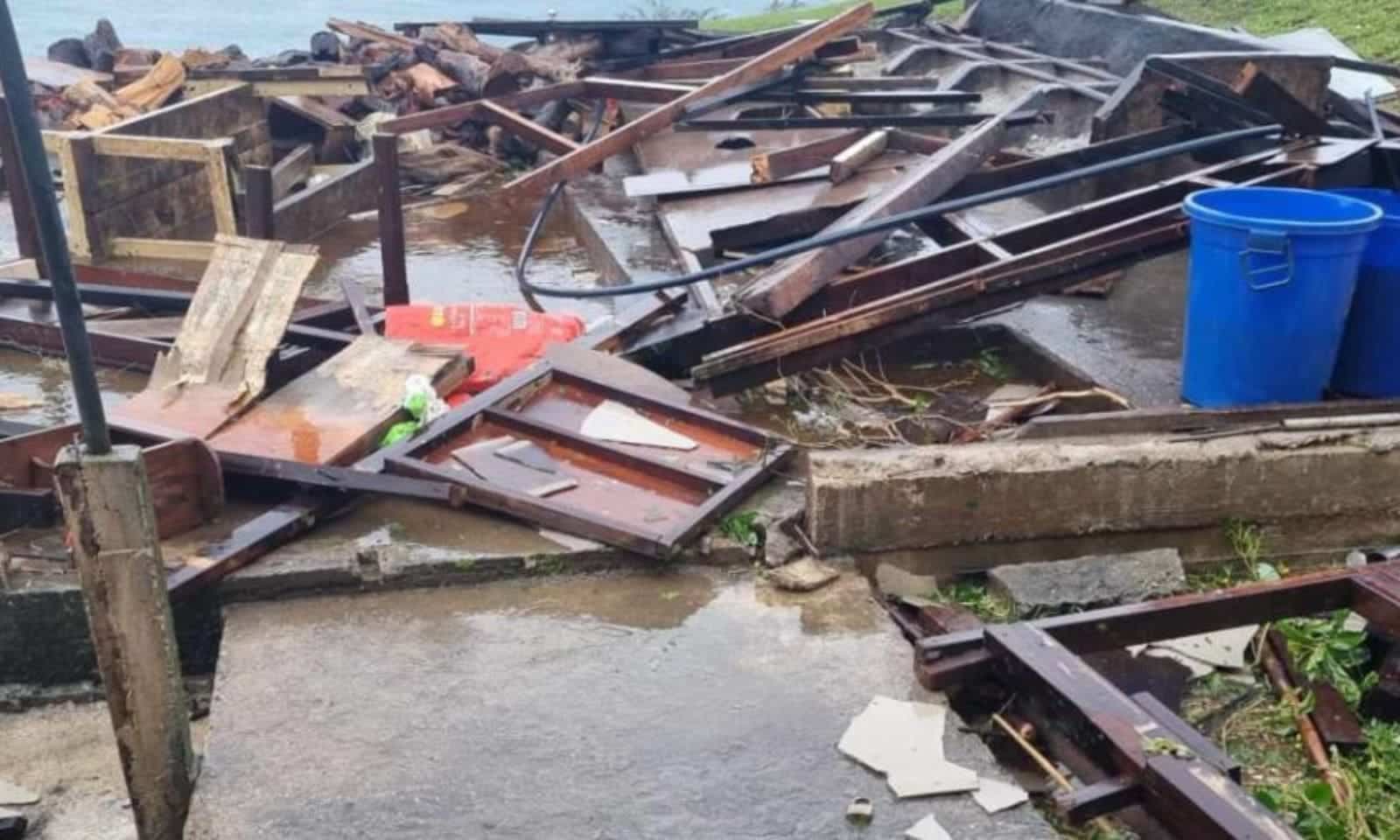

Pacific cyclone outlook: Fewer storms expected this season - NIWA
The likelihood of a tropical cyclone hitting the Pacific and New Zealand's North Island is considered "normal-elevated".


Excellence and possibility: Meet the new face of Pacific medicine in Aotearoa

Top 10 Pacific Island songs you need on your summer playlist in 2025


Our generosity is our strength but we must spend wisely this Christmas - expert

Excellence and possibility: Meet the new face of Pacific medicine in Aotearoa

Top 10 Pacific Island songs you need on your summer playlist in 2025

The chance of a tropical cyclone hitting the Pacific, including Aotearoa, New Zealand, is "normal to elevated", according to NIWA (National Institute of Water and Atmospheric Research) and MetService.
NIWA's tropical cyclone outlook for the region shows that six to 10 named tropical cyclones could affect the region between now and April.
The first cyclone of the cyclone season, Pita, passed near Niue last weekend.
Areas near the Coral Sea, the Solomon Islands, and Papua New Guinea may experience more tropical cyclone activity.
PNG, the Solomons, and northern New Zealand are expected to have normal or higher activity levels. Vanuatu and New Caledonia will likely see regular activity.
Tuvalu, Tokelau, Niue, the Society Islands, Fiji, and Tonga are expected to have regular or lower activity.
The southern Cook Islands and Austral Islands will see less activity, while the Marquesas, Kiribati, northern Cook Is, Tuamotu Archipelago, and Pitcairn Islands are unlikely to have any activity.
NIWA predicts three to four tropical cyclones reaching category three or higher could occur across the Pacific.
“Past seasons with similar conditions suggest that several tropical cyclones might reach at least category three strength," its report said.

"Category five cyclones, with winds of 200km/h or more, were common in similar past seasons.
“All communities should stay prepared,” NIWA said. “Even a weak or distant cyclone can cause significant damage or dangerous weather.
"When bad weather is forecast, please follow the advice of your local meteorological service or disaster management office.”
NIWA also notes that the El Niño Southern Oscillation, including La Niña, neutral, and El Niño phases, affects the development and coverage of tropical cyclones each year.
In early October, sea surface temperatures in the eastern and central equatorial Pacific were below average and near La Niña thresholds.
NIWA says weather patterns related to the El Niño Southern Oscillation suggest neutral conditions around French Polynesia and northern Australia.
Early forecasts indicate that La Niña, which could be of weak to moderate strength, has a 60-70 per cent chance of developing from February to April.
For New Zealand, the North Island faces a standard or higher risk, as each season, at least one ex-tropical cyclone is expected to come within 550km of the country.
“Two out of five past seasons had at least one ex-tropical cyclone passing within 550km," the NIWA report states.
"If a cyclone comes close to New Zealand, there is almost an equal chance it will go east or west of the North Island."
The historical climate data suggests that an ex-tropical cyclone could influence coastal areas around the North Island, but it might also affect the South Island.
One of these weather events could bring heavy rain, strong winds, dangerous marine conditions, and coastal damage.
Ex-tropical cyclones' impact can also cover a large area, especially if they interact with other weather systems.

Cyclone Lola left widespread damage in Vanuatu in 2023. Photo/file